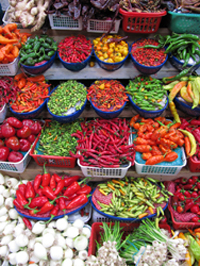Strong, proven performance in the field is what makes a biorational product such as Bt such an indispensible tool in a grower’s arsenal against lepidopetran pests. However, experienced Bt users know that a major advantage of biorational products is their multi-faceted value proposition.

One easy way to remember the most widely accepted of these benefits is the “Three Rs of Biorationals”:
- Resistance Management
- Restricted Entry Intervals
- Residues
Resistance Management is the hallmark of a program that includes biorational products. As the pool of allowable conventional insecticides continues to shrink, resistance management is an even greater concern for growers than in years past. Researchers and extension specialists will tell you that once growers find an effective and affordable insect management product, it’s common for that product to become overused and for resistance to develop quickly. Rotation with an effective Bt product such as DiPel or XenTari is among the best ways for growers to keep conventional pesticides viable for the long term.
Restricted Entry Intervals (REI) add complexity to a grower’s harvest and labor management considerations. Here again, biorational products help make a grower’s life easier in that most biorationals (Bt included) have a 0-4 hour REI and no pre-harvest interval. This makes biorationals especially strong for late season applications.
Residues are gaining increased attention in an ever-more complicated regulatory climate, especially among growers who export their products. Pesticide and food regulators around the world have established unique Maximum Residue Limits (MRLs) for their countries or regions. Since fresh fruit and vegetable growers may or may not know where their crop will wind up, residues levels are critical. For this reason, biorational products stand head and shoulders above most other crop protection tools. Since the vast majority of biorationals exhibit no human toxicity, they are exempt from tolerance.

